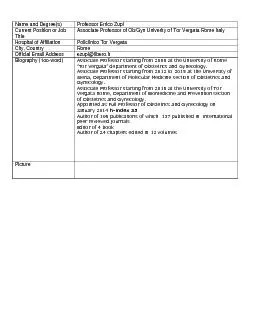PPT-DR.KAZEMINEZHAD Associate professor of
Author : Mysticlover | Published Date : 2022-08-01
Shahid Beheshti university Modarres Hospital Updates in Pathologic Staging and Histologic Grading of Renal Cell Carcinoma Renal cell carcinoma RCC ninth and
Presentation Embed Code
Download Presentation
Download Presentation The PPT/PDF document "DR.KAZEMINEZHAD Associate professor of" is the property of its rightful owner. Permission is granted to download and print the materials on this website for personal, non-commercial use only, and to display it on your personal computer provided you do not modify the materials and that you retain all copyright notices contained in the materials. By downloading content from our website, you accept the terms of this agreement.
DR.KAZEMINEZHAD Associate professor of: Transcript
Download Rules Of Document
"DR.KAZEMINEZHAD Associate professor of"The content belongs to its owner. You may download and print it for personal use, without modification, and keep all copyright notices. By downloading, you agree to these terms.
Related Documents














